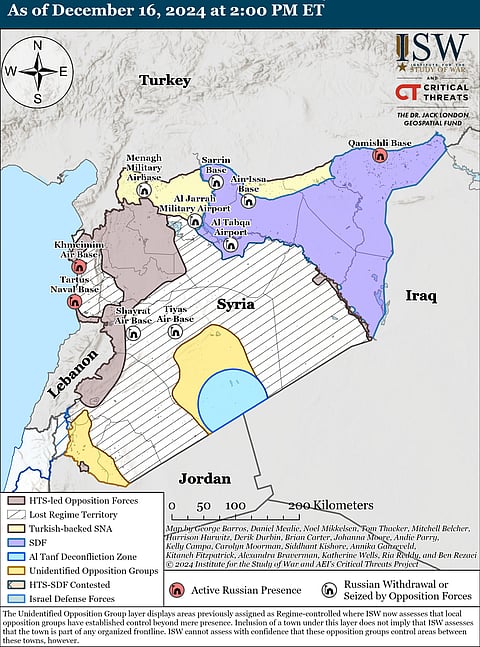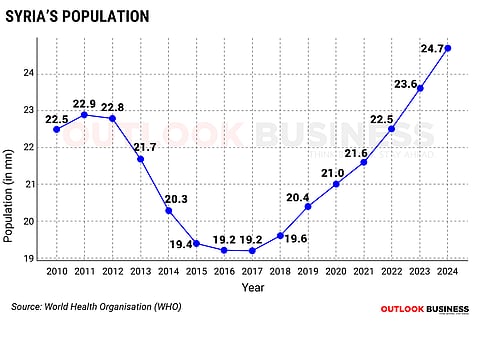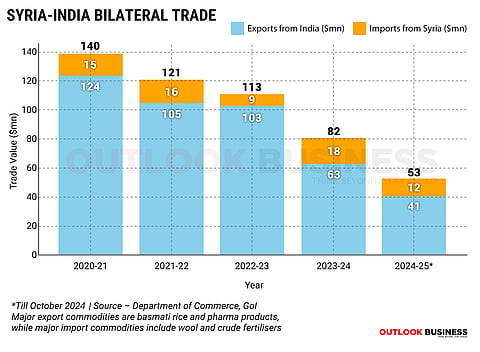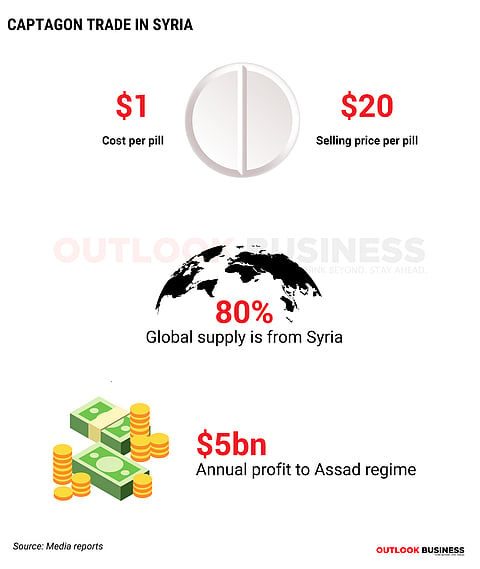The Assad family's five-decade rule came to an end last month when Hayat Tahrir al-Sham (HTS), the main militant group, took control of much of Syria.
Syria Crisis Explained in 5 Charts
While many are celebrating the fall of the Assad regime, the future remains unclear, with different rebel groups controlling various parts of the country
With Bashar al-Assad fleeing to Russia, rebellions have broken out across the country. In the south, militias backed by Jordan are attacking government positions, while in the northeast, the Syrian Democratic Forces (SDF), a Kurdish militia, are pushing toward Deir Ezzour.
While many are celebrating the fall of the Assad regime, the future remains unclear, with different rebel groups controlling various parts of the country.

Humanitarian crisis
Syria, once a thriving nation, turned into a war zone under Assad's regime. As per the Syrian Network for Human Rights (SNHR), at least 13mn Syrians are now internally displaced or refugees in a nation that once had a population of 22 mn.
Estimating the true death toll is difficult due to varying calculation methods. The Syrian Observatory for Human Rights has documented 507,567 deaths since 2011, with another 110,343 unverified deaths, bringing the total to 617,910.
The UN's 2021 estimate put the death toll at over 580,000, including 350,209 identified individuals. SNHR estimates 2,31,278 civilians to be dead in the conflict, most of which are attributed to the Assad regime forces and Iranian militias.

Internally displaced people: 7.2mn
Syrian refugees: 6.4mn
Extrajudicial killings: 231,278 civilian deaths (30,193 children+16,451 women), 876 medical personnel, 717 media workers
Forcibly disappeared persons: 156,757
Attacks by Syrian regime
897 attacks on medical facilities, 1,453 attacks on places of worship, 1,675 attacks on schools
81,916 barrel bombs dropped, 217 chemical weapon attacks, 252 cluster munitions attacks, 41 Incendiary weapons attacks
Nine out of 10 Syrians are poor
The World Bank estimates that Syria's GDP has dropped by 80%, and average incomes have fallen by 85% since the conflict began in 2011. Around 90% of Syrians now live in poverty, with the nation's economy still shattered by US sanctions.

Impact on India
The collapse of Assad’s regime also raises uncertainty for India’s infrastructure projects in Syria, including the Tishreen Power Plant and Block 24 oil exploration. Bilateral trade has been declining in recent years.

Captagon, Syria’s Cash Cow
Syria’s civil war in 2011 wrecked its fragile economy, forcing President Bashar al-Assad to rely on the trading of Captagon, a powerful amphetamine drug made in Syria.
Dubbed the "poor man’s cocaine", Captagon found a lucrative market in Saudi Arabia and the UAE, where alcohol bans and wealthy, young populations fuelled its demand. Fighters, including IS militants, also used it for stamina and to numb their fear in battle.
Assad’s regime profited over $5bn annually from the trade, far surpassing the official budget, and used it to fund military operations and maintain the dictatorship. HTS, which now controls Damascus' Captagon factories, claims it will not stop the drug trade.
